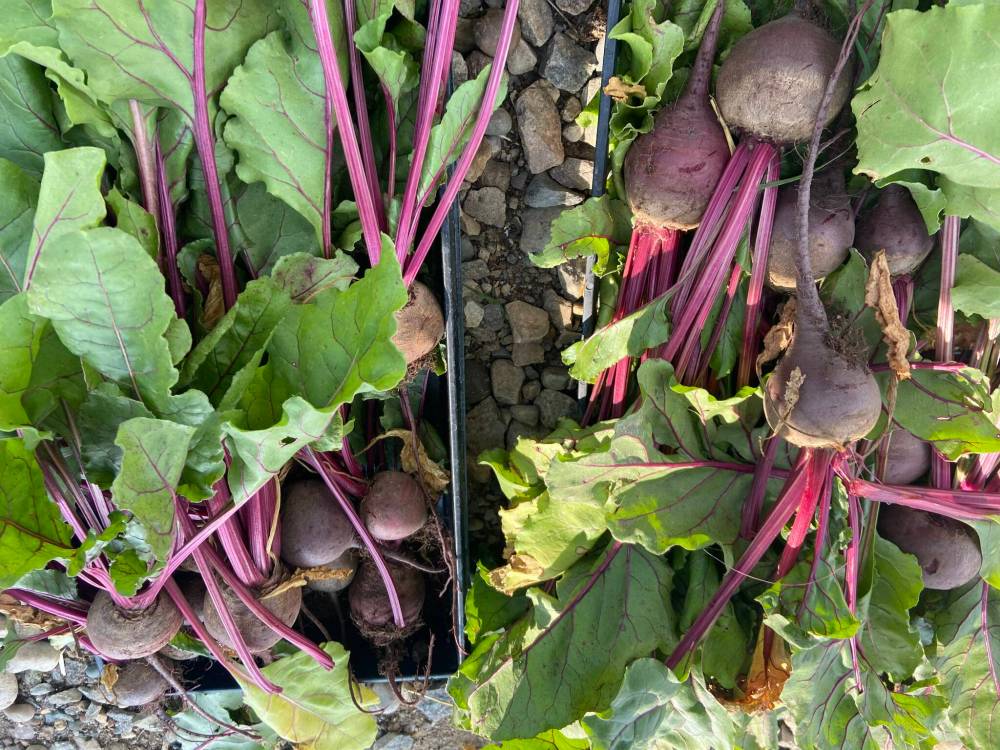Greenhouse boosting food production in Sioux Valley
Advertisement
Read this article for free:
or
Already have an account? Log in here »
We need your support!
Local journalism needs your support!
As we navigate through unprecedented times, our journalists are working harder than ever to bring you the latest local updates to keep you safe and informed.
Now, more than ever, we need your support.
Starting at $15.99 plus taxes every four weeks you can access your Brandon Sun online and full access to all content as it appears on our website.
Subscribe Nowor call circulation directly at (204) 727-0527.
Your pledge helps to ensure we provide the news that matters most to your community!
To continue reading, please subscribe:
Add Brandon Sun access to your Free Press subscription for only an additional
$1 for the first 4 weeks*
*Your next subscription payment will increase by $1.00 and you will be charged $20.00 plus GST for four weeks. After four weeks, your payment will increase to $24.00 plus GST every four weeks.
Read unlimited articles for free today:
or
Already have an account? Log in here »
Hey there, time traveller!
This article was published 14/02/2023 (990 days ago), so information in it may no longer be current.
A new greenhouse in Sioux Valley Dakota Nation will allow community members to grow and receive fresh produce year-round.
The facility, which produces plants in water, known as hydroponics, adds to the community’s existing six acres of growing land and 40,000 square feet of gardens this year.
The food grown in the greenhouse will be distributed to community members who have registered for a subscription box, which can be delivered either monthly, biweekly or weekly.

Beets are seen in a garden at Sioux Valley Dakota Nation. With a new greenhouse, the community can grow produce year-round. (Submitted)
The program started in 2019 as a partnership between the First Nation and the Centre for Indigenous Environmental Resources to introduce sustainable practices and environmental stewardship to the community. The centre, Canada’s first Indigenous-directed, non-profit environmental charitable organization, supports Indigenous people in building sustainable communities. The Sioux Valley garden project is one of the 450 initiatives on more than 300 First Nations the centre has supported.
Two poly greenhouses, where polythene sheets are used as a covering material under which crops can grow in partially or fully controlled climate conditions, have also been built. Additionally, 20,000 square feet of saskatoon bushes have been planted in the garden’s new, permanent location. It had to be moved due to development in the community, said Jennifer McIvor, the community garden co-ordinator.
“We’re hoping to keep adding to that to have our own orchard,” she said.
The main crops grown in the garden include potatoes, cucumbers, tomatoes, beets and leafy greens. With the new greenhouse, these plants can be grown and harvested all year long, McIvor said.
Since 2019, the community garden initiative has also purchased and distributed compost bins to 70 households across Sioux Valley, and has designated a space for people to drop their compost off. Several community workshops have been held, including one about composting and another on food preservation methods. A Dakota gardening and harvesting guide has also been distributed throughout the community.
Cheyenne Ironman, who was the community garden co-ordinator before McIvor, said Sioux Valley first applied for project funding in 2018. Money for the garden comes from Agriculture and Agri-Food Canada.
Since its inception, elders have helped guide the initiative.
“We hope to keep involving our youth and our elders,” McIvor said. Part of this year’s garden has been set aside to grow native plants that are traditionally significant to the Dakota culture, she added.
“It kind of acts as a resource for our elders to come in and do workshops.”
Children and youth have previously come to the garden during field trips to harvest saskatoon berries, and young people are often hired as summer students.
“We have casual workers come in and do the harvesting and weeding,” McIvor said.
“We try to include the kids and the youth as much as we can.”
If all goes to plan, the garden will soon be working with Sioux Valley Elementary School to contribute to its lunch program. McIvor said she’d also like to have an elder host a workshop on traditional native plants and how to use them.
» mleybourne@brandonsun.com
» Twitter: @miraleybourne
